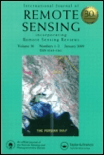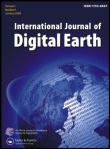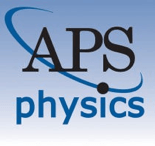
JOURNAL OF GEODESY
metrics 2024
Elevating Geodesy: Where Innovation Meets Academia
Introduction
JOURNAL OF GEODESY, published by SPRINGER, is a premier academic journal dedicated to advancing the field of geodesy and its related disciplines. With an impact factor reflecting its high citation rate and rigorous peer-review process, this journal occupies a distinguished place in the academic community, categorized within the Q1 quartiles for Computers in Earth Sciences, Geochemistry and Petrology, and Geophysics as of 2023. The journal addresses various critical topics affecting our understanding of Earth’s shape, gravity field, and rotational dynamics, thus providing vital insights for researchers, professionals, and students alike. Derived from a legacy that spans from 1995 to 2024, the journal continues to publish significant contributions that foster growth in Earth and planetary sciences, with rankings that place it within the top tier of its categories: 10th in Geophysics, 13th in Geochemistry and Petrology, and 9th in Computers in Earth Sciences, all reflecting percentile rankings above 88%. Although Open Access options are not currently available, the journal remains an essential resource for advancing geodetic research across the globe. Explore the latest findings and connect with leading experts in the field through this highly regarded platform.
Metrics 2024
 1.38
1.38 3.90
3.90 5.10
5.10 115
115Metrics History
Rank 2024
Scopus
IF (Web Of Science)
JCI (Web Of Science)
Quartile History
Similar Journals

INTERNATIONAL JOURNAL OF REMOTE SENSING
Exploring the Frontiers of Earth ObservationInternational Journal of Remote Sensing, published by Taylor & Francis Ltd, stands at the forefront of Earth and Planetary Sciences, providing a critical platform for disseminating pioneering research since its inception in 1980. With an impressive ranking of #25 out of 195 in general Earth and Planetary Sciences and a notable 87th percentile on Scopus, this journal is recognized for its high-quality contributions that span diverse topics including satellite imagery analysis, geospatial technologies, and environmental monitoring. As a Q1 journal in its field for 2023, it offers invaluable insights and methodologies that are essential for researchers, professionals, and students alike. Although not Open Access, the journal facilitates a comprehensive understanding of remote sensing sciences, ensuring that the scholarly community remains updated with the latest advancements, trends, and applications that impact global challenges.

Artificial Satellites-Journal of Planetary Geodesy
Pioneering Research at the Intersection of Satellites and Planetary ScienceArtificial Satellites-Journal of Planetary Geodesy is a pivotal academic journal dedicated to the field of planetary geodesy, focusing on the intersection of satellite technology and planetary sciences. Published by SCIENDO, this journal, with an ISSN of 0208-841X and an E-ISSN of 2083-6104, offers comprehensive insights into current research developments through peer-reviewed articles. Operating under an open-access model, the journal is accessible to a wide audience, fostering a collaborative environment among researchers and practitioners worldwide. Established in 2009, it has emerged as a significant resource, ranking in the Q4 category for Space and Planetary Science and recognized in the Scopus database, placing it within the 12th percentile among earth and planetary sciences journals. The journal's objective is to advance knowledge in the application of satellite technology to planetary studies, making it an essential platform for innovative research, methodological advancements, and interdisciplinary dialogues for professionals, researchers, and students in the field.

Geofizika
Advancing Geophysical Knowledge for AllGeofizika, an esteemed journal published by the Andrija Mohorovičić Geophysical Institute at the University of Zagreb, presents a significant platform for research in the fields of geophysics and Earth sciences. With an Open Access model established since 1984, this journal ensures that scientific knowledge is accessible to a broad audience, encouraging collaborations and the free exchange of ideas. Geofizika has steadily evolved through its converging years from 1989 to 1999 and has been active from 2003 to the present, reflecting its commitment to advancing geophysical research. The journal has been recognized for its contributions to Earth and Planetary Sciences and has acquired respectable ranks in various categories; notably, it holds a Q4 status in Geophysics as of 2023. Researchers, professionals, and students will find Geofizika a valuable resource for the latest discoveries and methodologies in geophysics, supporting the academic community in expanding the frontiers of knowledge in these vital scientific domains.

Universe
Pioneering Open Access in the Study of the Universe.Universe is a distinguished peer-reviewed journal published by MDPI, specializing in the dynamic fields of Physics and Astronomy. Established in 2015, this Open Access journal has rapidly gained recognition, achieving a prestigious Q1 quartile ranking in its category as of 2023. With its E-ISSN 2218-1997, the journal primarily serves the international scientific community, offering a platform for researchers to disseminate innovative ideas and findings. Based in Switzerland, Universe covers a wide range of topics within astronomy and astrophysics, ensuring that cutting-edge research is accessible to an ever-growing audience. Its commitment to open access principles since its inception allows for unrestricted dissemination of knowledge, fostering a collaborative environment essential for scientific advancement. By aligning its objectives with the promotion of high-quality research and interdisciplinary discourse, Universe stands as a vital resource for academics, professionals, and students aiming to contribute to and engage with the ever-evolving landscape of astronomical research.

Physics of the Dark Universe
Transforming Perspectives on Dark Cosmic PhenomenaPhysics of the Dark Universe is a premier academic journal published by Elsevier, dedicated to advancing the understanding of dark matter, dark energy, and their implications for the universe. With its ISSN N/A and E-ISSN 2212-6864, the journal has established a notable presence since its inception in 2012, operating out of Amsterdam, Netherlands. As evidenced by its impressive impact factor and its ranking in the top quartile in both Astronomy and Astrophysics (Q1) and Space and Planetary Science (Q1) categories for 2023, this journal is a vital resource for researchers and practitioners within these fields. In the latest Scopus ranks, it ranks #12 out of 104 in Earth and Planetary Sciences and #13 out of 90 in Physics and Astronomy, placing it in the 88th and 86th percentiles respectively, underlining its academic significance. The journal is not Open Access, yet it plays an essential role in disseminating high-quality research that pushes the boundaries of knowledge about the cosmos and its most enigmatic components. Researchers, professionals, and students interested in the forefront of astrophysics will find this journal an indispensable tool for staying abreast of emerging discoveries and ongoing debates.

International Journal of Digital Earth
Fostering collaboration in the realm of digital Earth sciences.Welcome to the International Journal of Digital Earth, a premier open-access journal published by Taylor & Francis Ltd, dedicated to advancing the field of digital geoscience. With its ISSN 1753-8947 and E-ISSN 1753-8955, this journal has established itself as a vital resource for scholars and practitioners alike since its inception in 2008. The journal is at the forefront of interdisciplinary research, showcasing a diverse scope from Earth sciences to computer science applications, evidenced by its impressive ranking in the 2023 Scopus database. It holds a Q1 categorization in Earth and Planetary Sciences, with a percentile rank among the top 16% of its peers, and also stands out in the Q2 quartile for both Computer Science Applications and Software disciplines. The journal's commitment to open access, established in 2022, underscores its dedication to disseminating knowledge and fostering collaboration. By providing a platform for high-quality research, the International Journal of Digital Earth plays a critical role in addressing the complexities of our changing planet through innovative digital solutions. Whether you are an experienced researcher or a student, this journal is an essential addition to your academic toolkit.

Advances in Geodesy and Geoinformation
Connecting Scholars and Practitioners in Geospatial ScienceAdvances in Geodesy and Geoinformation is a pioneering journal published by the Polish Academy of Sciences, dedicated to the dynamic fields of geodesy and geoinformation. With an ISSN of 2720-7242 and an E-ISSN of 2720-7242, it offers an open-access platform since 2022, making cutting-edge research readily accessible to a global audience. The journal aims to foster the dissemination of innovative methodologies, technologies, and applications in the realms of geospatial data and earth sciences. Researchers, professionals, and students alike can benefit from the high-quality articles that contribute to advancing knowledge in this critical area, bridging theoretical insights and practical solutions. Situated in the heart of Poland, at PL Defilad 1, Warszawa, the journal not only reflects the nation's academic rigor but also positions itself as a crucial hub for international collaboration and knowledge exchange in geodesy and geoinformation.

Geodetski Vestnik
Exploring New Horizons in Earth and Planetary Research.Geodetski Vestnik is a prominent open-access journal published by the Association of Surveyors Slovenia, dedicated to advancing the field of Earth and Planetary Sciences. With an ISSN of 0351-0271 and an E-ISSN of 1581-1328, this journal has been contributing valuable research since its inception in 1992, with converged years extending to 2024. As of 2023, it holds a Q3 category in Earth and Planetary Sciences and ranks #144 out of 195 in its Scopus category, indicating a focused, though emerging, presence in the scientific community. The journal embraces a commitment to open access since 2003, ensuring that research is freely accessible to professionals, researchers, and students worldwide. Geodetski Vestnik serves as a vital platform for disseminating innovative research, methodological advancements, and significant case studies in geodesy and related sciences, fostering collaboration and knowledge sharing among scholars and practitioners in Slovenia and beyond.

Acta Geodaetica et Geophysica
Connecting Disciplines for a Deeper Understanding of Our PlanetActa Geodaetica et Geophysica is a prestigious journal published by Springer, focusing on the interdisciplinary domains of geodesy, geology, and geophysics. With an ISSN of 2213-5812 and E-ISSN of 2213-5820, this journal serves as a vital resource for researchers, professionals, and students interested in building and construction, as well as the broader aspects of Earth and planetary sciences. Operating since 2013 and poised to continue until 2024, Acta Geodaetica et Geophysica has consistently maintained its relevance within the academic community, evidenced by its Q3 quartile ranking in the fields of Building and Construction, Geology, and Geophysics for 2023. The journal's Scopus ranks highlight its competitive standing, ranking 118 out of 321 in Geology, and 66 out of 165 in Geophysics, reflecting its impactful contributions to the field. Although this journal does not offer open access, it remains an essential publication that enriches ongoing research and promotes knowledge dissemination in Hungary and beyond. Researchers and academics seeking to advance their studies will find valuable insights and rigorous analyses within its pages, making it a cornerstone of contemporary geoscience literature.

PHYSICAL REVIEW D
Connecting Scholars to the Pulse of Modern PhysicsPHYSICAL REVIEW D, published by the American Physical Society, is a premier journal dedicated to the rapid dissemination of significant research findings in the fields of Nuclear and High Energy Physics as well as Physics and Astronomy. With an impressive Impact Factor and a prestigious Q1 ranking in 2023, it stands as one of the leading journals in its domain, with a Scopus ranking of #6 out of 87 in its category, placing it in the 93rd percentile. The journal welcomes rigorous theoretical and experimental studies that advance understandings in particle physics, cosmology, and quantum field theory. Although it does not provide open access, researchers gain a significant platform to reach a global audience and contribute to the ongoing discourse within the scientific community. Published regularly since its convergence starting in 1989, it remains essential for both emerging and established scholars looking to stay at the forefront of high-energy and nuclear physics research.